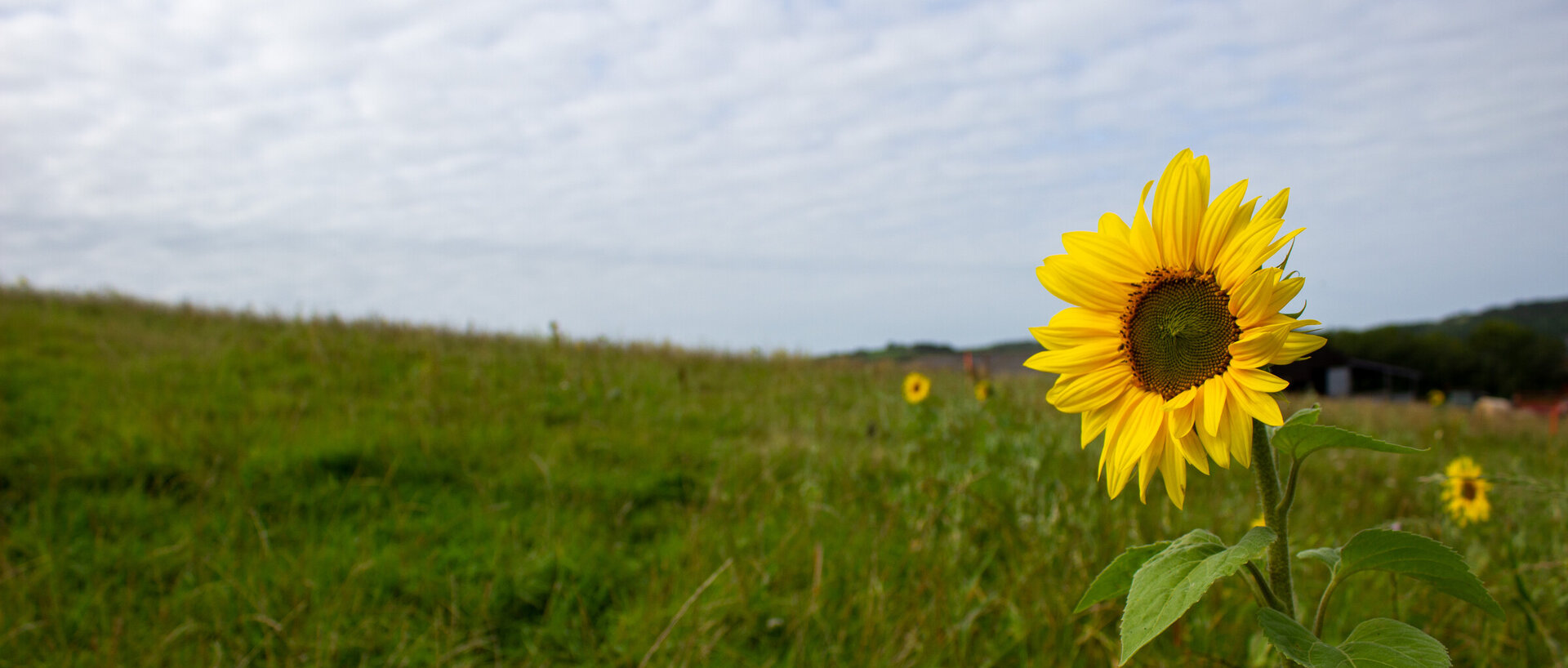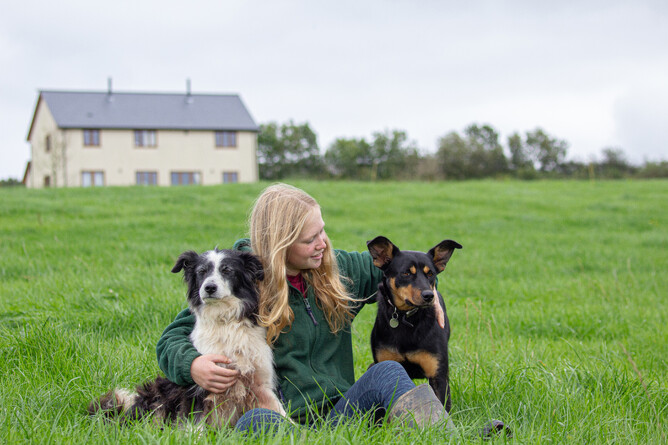I’m really excited to be able to say our new website is live and thank you for visiting! It is the culmination of a lot of work over the past few years towards being able to offer our quality produce to a wider local audience. It is also an opportunity to share our journey as we develop our farming using regenerative agriculture methods and I hope you will enjoy seeing the animals as they grow and develop to produce the eggs and meat that we sell.
Through our blog, I hope you’ll get to know me a little better and we can guide you around our website.
A little about me & my family
I’ve come from a family of farmers going back several generations, largely in North Devon in the South West of England. However, as farming skipped a generation on my father's side and my mother's parents were agricultural contractors, my parents had no family farm to take on. They first started with temporary grass lets, then became tenant farmers, before being able to purchase Redwoods Farm in Mid Devon, where we are now based. Here they keep cattle, sheep and broiler chickens, while I keep pigs, laying hens and a few cattle.
Originally following contemporary farming methods of a more intensive nature, over the years they have moved to a more forage based system and latterly regenerative farming. You can read more on our about us webpage and the development of Redwoods Farm in our blog A warm welcome to Redwoods Farm.
Regeneration inspiration
Whilst I was doing my A-levels, my father visited Groundswell, a regenerative farming conference in 2019, and encouraged me to contact them as I was looking for somewhere to broaden my knowledge on regenerative agriculture. I started my internship on their farm a few months later. There I worked with the cattle, observing how changes in management affected the wildlife, cattle and recovery of the pasture. I helped to set up a laying hen operation to follow the cattle in the pasture. I also learnt about how regenerative agriculture can be incorporated into arable farming, through no till cropping.
In 2019 I undertook a course by 3LM in holistic management, which encourages us to think about agriculture as a part of the whole. Our farm is not isolated from the surrounding environment and it made me think in a new way about all the resources we use, from the pasture in the fields and the grain we buy in, to the soil and the organisms within it. It turned my focus onto not only the livestock and grass growth, but also the soil, water courses, wildlife, the consumer and also myself as the farmer. We should always be observing the effects our management has and careful planning is required for us to be able to use our management of livestock to create the conditions we want, such as increasing the diversity of the pasture.
Learning how different people are practicing regenerative agriculture allows us to adapt and integrate their systems within our farm. There are so many different ways in which the principles of regenerative agriculture can be interpreted. We’ll have more about regenerative agriculture in our Regenerative blog category, as we build a library of articles to help explain the principles and how we apply them to our farming practices, starting with our first Regenerative agriculture blog.
My animals
After my parents moved to a beef suckler herd at Redwoods, I continued to rear several calves myself. However, my parents’ desire to close the herd to reduce the introduction of disease meant I could not buy in any more calves. I decided to keep a few of my own British Blue cross cows for breeding.
I’ve had hens for about 6 years, selling eggs to friends and family, although now I have expanded my flock to meet a growing demand for my eggs. Previously on a free range system, I’ve been inspired by seeing pastured poultry systems through videos and meeting others in the industry. My hens are now moved daily to provide them with fresh grass, as well as fertilising the land.
My pigs work to improve particularly poor areas of pasture or are used to sow seed which, when grown, provides them with a more diverse forage based diet. Many of them live in the woods with frequent moves to prevent damage to the woodland and encourage plant diversity. Having started in 2017 with a Large White/Saddleback cross, I am now moving to a more traditional breed system, with predominantly Gloucestershire Old Spot pigs.
You can find more in Our Animals pages and we’ll have updates of new arrivals, breed analysis and more in Our Animals blog category.
A new (old?) way of farming
I have grown up understanding the importance of where our food comes from, and after watching my parents change their way of farming at Redwoods and studying Environmental Science A level, it led me to question if we are really doing enough. We believe there is no one size fits all in farming, which means that we should always be adapting our management for what challenges the climate gives us, as well as what the livestock and soil require.
Changing our farm into a regenerative system is a gradual process. Nature responds slowly to the changes in management as the soil and pasture need time to adjust from a dependency on synthetic inputs to being able to provide for itself.
Animals are part of nature and it is our responsibility to ensure our livestock display their natural behaviours in the ways in which they interact with the wider environment. Our pigs create compost with their rooting abilities and our dense sheep and cattle herds trample plants to store carbon within the soil. Many of the modern day breeds have become reliant on human intervention but we choose hardy breeds which can care for themselves, with easy birthing to reduce their stress and good growth rates from forage.
Buying our produce
You will be able to buy our produce through this website. Starting with eggs and pork, we will be adding chicken, lamb and beef as it becomes ready, all of which will be delivered locally. We currently deliver our eggs weekly to Uplowman, Sampford Peverell, Halberton, along with the Post Hill and Blundells Road areas of Tiverton.
Our meat is available monthly and we deliver within an approximately 4 mile radius of Halberton. We are hoping to expand our delivery area, so if we don’t deliver to you yet, please do register your interest to share your location and we will be in touch once we have sufficient interest in your area to make it viable.
Sharing life at Redwoods
We’re looking forward to sharing our life on Redwoods Farm. Whether that be through our website and blogs to keep you updated on our progress, or by supplying you with fully traceable, quality produce. We hope you’ll enjoy the relaxed pace at Redwoods as we raise our pasture fed livestock in a way that is never rushed.


